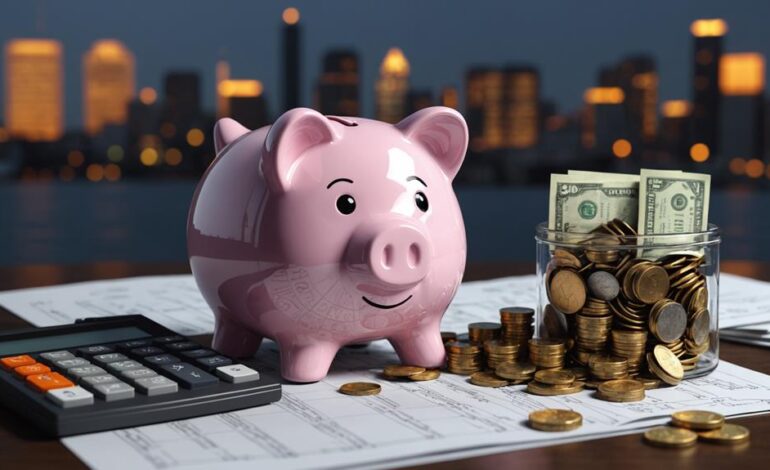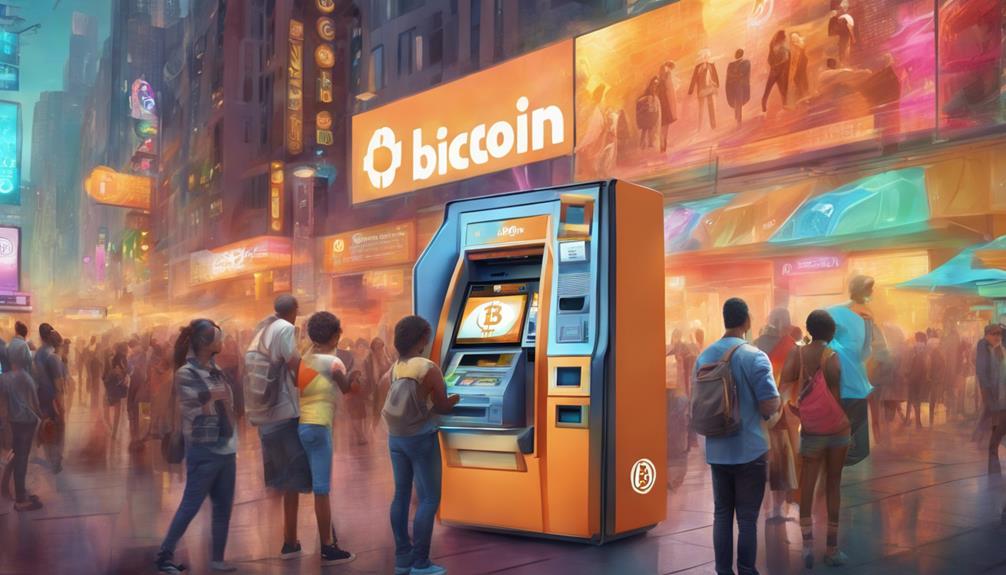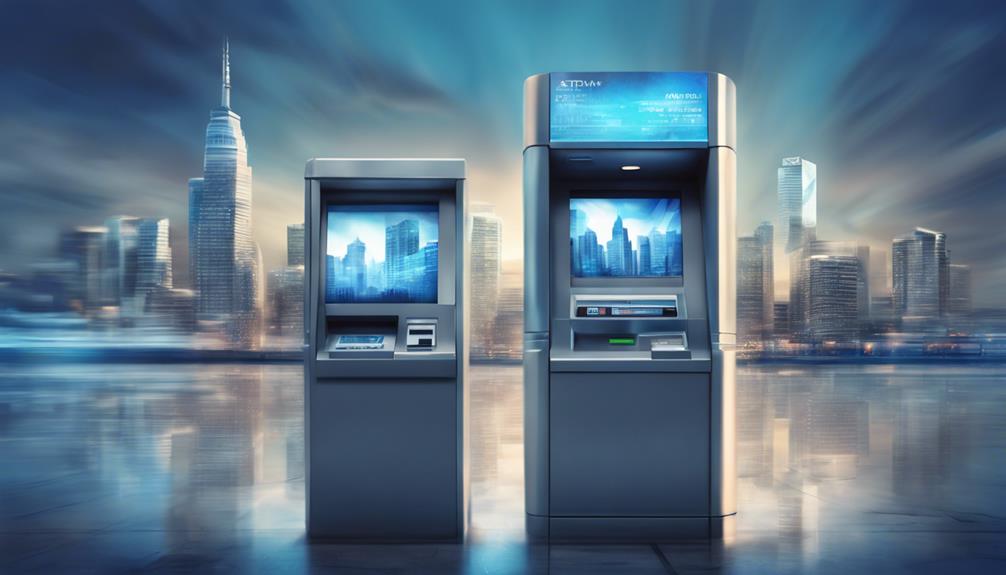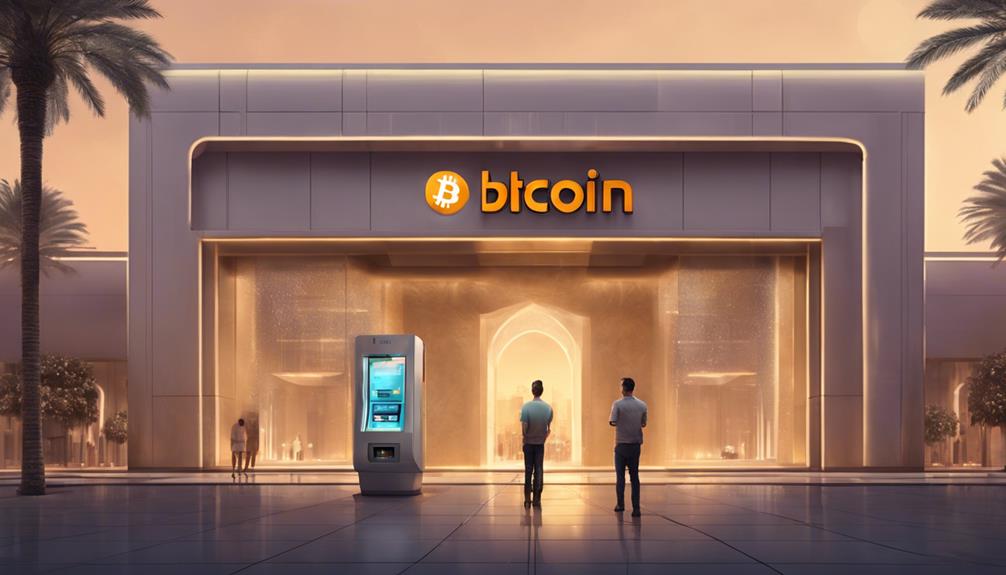How Bitcoin Machine Works

To start, you'll need to understand how a Bitcoin ATM works.
These machines, also known as cryptocurrency kiosks, allow you to purchase or sell Bitcoin using cash.
Simply insert the cash you want to exchange for Bitcoin into the machine, then scan the QR code of your digital wallet.
The ATM will transfer the corresponding amount of Bitcoin to your wallet at the current market rate.
While some Bitcoin ATMs also let you sell your Bitcoin and receive cash in return, this convenience comes with fees that can be as high as 20 percent.
Now, are you ready to explore the specifics?
Bitcoin ATM: Benefits and Risks
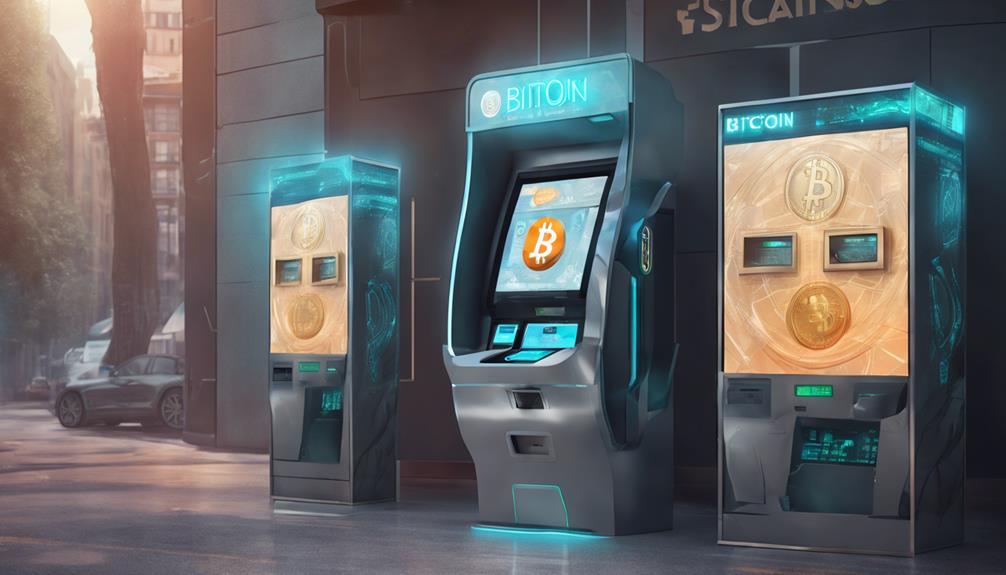
In the rapidly evolving world of cryptocurrency, Bitcoin ATMs have emerged as a convenient and accessible way to buy and sell Bitcoin.
With over 31,000 machines available across the United States, you can easily exchange cash for digital Bitcoin currency at various locations, often situated in public spaces such as grocery stores and gas stations.
Bitcoin ATMs offer several benefits, including:
- Ease of Access: They can be used without needing a traditional bank account, making cryptocurrency more accessible to everyone, especially those without traditional financial infrastructure.
- Anonymity: Many Bitcoin ATMs don't require personal information, ensuring privacy for users, although some may require identification for regulatory compliance.
- Bi-Directional Functionality: Some Bitcoin ATMs allow you to sell Bitcoin as well, increasing flexibility in your transactions.
However, these benefits come with significant risks:
- High Transaction Fees: Associated fees can range from 4.99% to 21.90%, impacting your overall profit, and are typically charged as a percentage of the transaction.
- Lack of Regulatory Protection: Bitcoin ATMs are vulnerable to fraudulent activities like scams and hacking due to limited regulatory oversight, posing security threats to users.
- Security Risks: Since transactions involve cash transfers to digital wallets, you must take care to avoid falling prey to scams, ensuring the security of your digital assets.
When using Bitcoin ATMs, ensure you stay informed about their risks and benefits to make the most of this technology while avoiding potential pitfalls, utilizing effective customer service to bridge any knowledge gaps.
Fees and Transaction Costs
Fees and Transaction Costs: Understanding the Costs of Using a Bitcoin ATM
When using a Bitcoin ATM, you need to pay fees ranging from 4.99% to 21.90% of your total transaction value. These fees are typically charged as a percentage rather than a fixed amount. When you buy digital currencies through a Bitcoin ATM, the fees are added to the market exchange rate. For instance, if you purchase $1,000 worth of Bitcoin, you might pay between $49.90 and $219.00, depending on the ATM chosen.
Bitcoin ATM Regulatory Environment
Bitcoin ATM operators must register with the Financial Crimes Enforcement Network (FinCEN) and comply with anti-money laundering provisions of the Bank Secrecy Act (BSA).
Types of Bitcoin ATM Fees
There are three types of fees associated with using a Bitcoin ATM:
- Transaction Fees: Ranging from 5% to around 10% of the transaction amount.
- Exchange Rates: Bitcoin ATMs set exchange rates, which may vary according to market conditions, and can be slightly higher than market rates.
Impact on Transactions
It is essential to consider these fees when using a Bitcoin ATM, as they can significantly impact the value of your transactions. The fees are a crucial aspect to consider, especially if you're using the ATM regularly. To ensure you get the best value, research the fees associated with different Bitcoin ATMs and understand the exchange rates before completing a transaction.
Buying Bitcoin With Cash
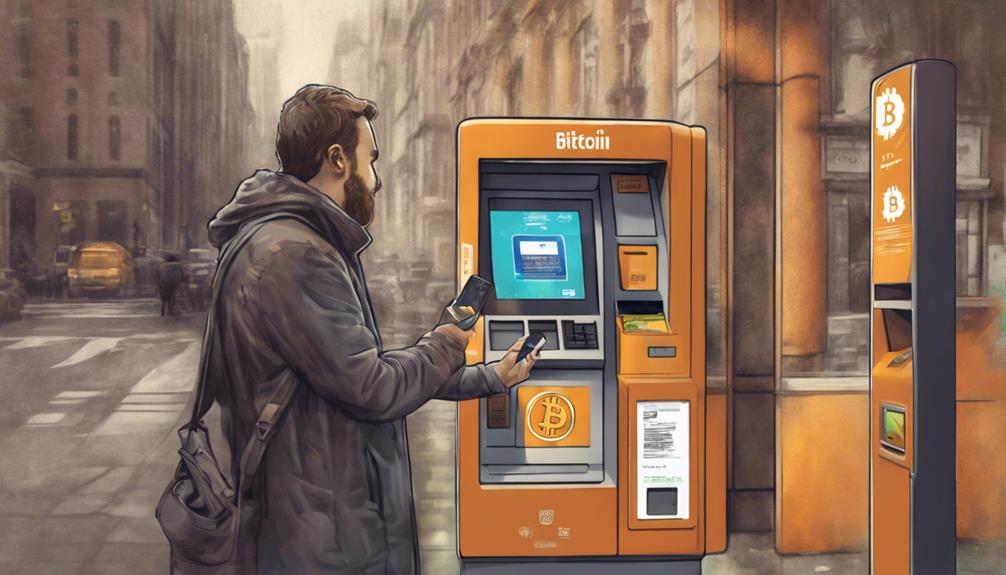
You can now use Bitcoin ATMs to buy Bitcoin with cash by inserting your money and scanning your digital wallet's QR code, providing direct Bitcoin transfer to your wallet.
This easy-to-use system allows you to acquire crypto tokens quickly, without the need for online exchanges or trading platforms.
These ATMs are easily accessible and can be found in various locations such as shopping centers, airports, and convenience stores.
To find the closest Bitcoin ATM near you, you can use online directories or mobile apps, such as CoinATMRadar, Bitcoin ATM Map, or CoinATMFinder.
These machines charge fees ranging from 7% to 20% per transaction, which is a notable drawback.
Additionally, some Bitcoin ATMs may require identity verification, particularly for larger transactions, necessitating the provision of a phone number and government-issued identification.
Selling With Bi-Directional ATMS
You can use bi-directional Bitcoin ATMs to sell your Bitcoin and receive cash in exchange, providing a convenient way to convert cryptocurrency back into fiat currency.
These advanced machines, designed to process both buying and selling transactions, make them a popular choice for users who need to convert their Bitcoin quickly.
When selling Bitcoin through a bi-directional ATM, you typically need to scan a QR code or enter your Bitcoin wallet address to initiate the transaction. From there, you receive cash dispensed from the machine.
In this process, the ATM operator sets the exchange rate for the transaction, which may include a variable miner fee to compensate those validating transactions on the blockchain.
It's worth noting that bi-directional Bitcoin ATMs are relatively rare, with only a small percentage of the approximately 31,000 Bitcoin ATMs in the United States offering this functionality.
Nonetheless, these machines provide users with a diverse range of exchange options, enhancing the feasibility and versatility of cryptocurrency transactions.
Avoiding Scams and Fraud
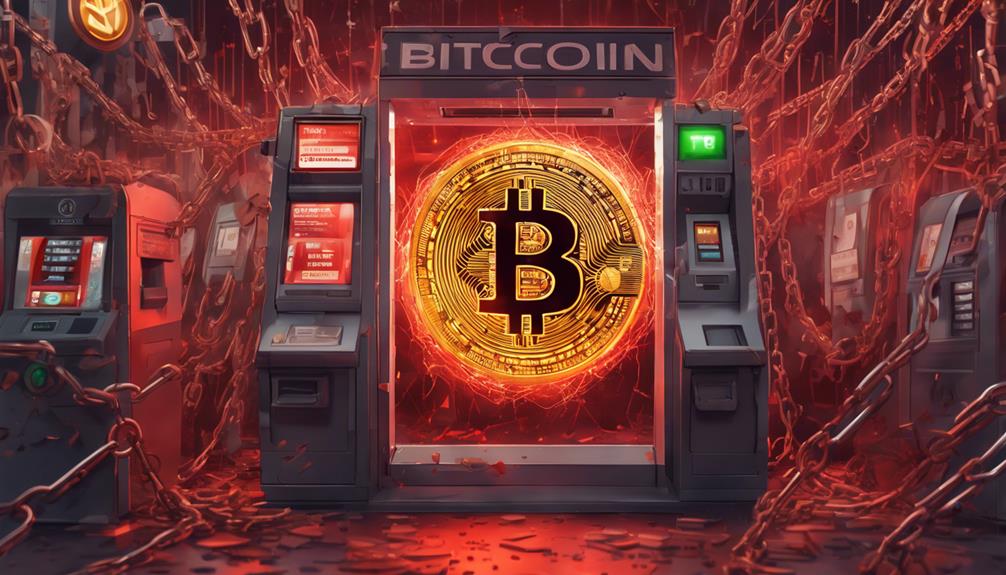
To safeguard your transactions, it's crucial to verify the authenticity of the Bitcoin ATM you're using, particularly in locations such as grocery stores, gas stations, and malls, because scammers frequently target these machines with fake or compromised terminals.
Never use a Bitcoin ATM instructed by someone you don't know or trust, especially if it involves transferring money for a suspicious reason, like false emergencies or urgent legal issues. These scams often take advantage of the lack of centralized oversight in the crypto market.
When using a Bitcoin ATM, make sure to scan the QR code correctly and ensure the amount of cryptocurrency matches your intended purchase. Always go through reputable channels to gather information about the ATM and the service provider, such as the Washington State Department of Financial Institutions (DFI) or the Federal Trade Commission (FTC).
Be aware that traditional ATMs are sometimes repurposed, so it's important to avoid these modified kiosks connected to illicit activities like romance scams, pig butchering scams, or investment adviser scams.
To keep your cryptocurrency safe, never reveal your wallet address or private key to unknown individuals. Use secure and trusted platforms, such as licensed money transmitters, and always monitor your transactions to avoid any potential fraud.
Before making a purchase, ensure the Bitcoin ATM is legitimately operated and compliant with regulatory requirements, and verify the license of the money transmitter. Following these tips will significantly reduce your risk of falling victim to Bitcoin ATM scams and ensure your transactions are secure and smooth.
Frequently Asked Questions
How Do Bitcoin Machines Work?
Bitcoin machines, also known as Bitcoin automated teller machines (ATMs), allow users to purchase and sell cryptocurrencies quickly and securely. Here's how they work:
- Select the Buy Option: On the machine's screen, select the option to buy Bitcoin.
- Enter 2FA Code: You will be prompted to enter your phone number and will receive a two-factor authentication (2FA) code via SMS. Enter this code to proceed.
- Scan Wallet QR Code: Scan your digital wallet's QR code using the ATM's camera. This confirms your wallet address.
- Insert Cash or Use Debit/Credit Card: Deposit the desired amount of cash or use a debit/credit card to fund your purchase.
- Transaction Confirmation: Confirm the transaction amount. The machine will then process the transaction on the blockchain and transfer the purchased Bitcoin or other cryptocurrencies to your digital wallet.
How Much Does Bitcoin ATM Charge for $1000?
When using a Bitcoin ATM to purchase $1,000 in bitcoin, you may have diverse experiences. Some ATMs can charge you a high fee, around 10% to 20% (so $100 to $200 in fees), while others may be cheaper, ranging from 4% to 8% (so $40 to $80).
How Much Does Bitcoin ATM Charge per $500?
When you buy $500 of Bitcoin, the ATM charge can range from 7.5% to 25%, depending on the vendor. This means you might pay between $37.50 and $125 in fees, leaving you with $462.50 to $375 in Bitcoin.
How to Send Money Using a Bitcoin Machine?
To send money using a Bitcoin ATM, find your nearest machine using live mapping services like Coin ATM Radar or Bitcoin ATM Map, which provide convenient tools to locate ATMs by proximity, operator, fee, and other parameters. Ensure your wallet is set up prior to the transaction, involving steps such as:
1. Creating a Crypto Wallet
- Research wallet types (software, hardware, and online).
- Choose a reputable wallet provider (e.g., Exodus, MyEtherWallet, Ledger).
2. Preparing the Recipient
- Ensure the recipient has a crypto wallet.
3. Deposit Cash and Confirm
- Select the 'Send Bitcoin' option on the ATM.
- Scan the QR code or manually enter the recipient's wallet address.
4. Receive Confirmation
– Wait for the transaction to be confirmed on the blockchain, which may take some time depending on the network traffic and chosen transaction fees.
Conclusion
Using a Bitcoin ATM is a convenient and secure way to buy or sell Bitcoin.
To initiate a transaction, insert cash into the machine and then scan your wallet's QR code. The Bitcoin ATM transfers the corresponding amount of Bitcoin to your digital wallet.
Be cautious of fees, exchange rates, and potential fraud when using these ATMs. These fees can be significant, ranging from 4% to 25% of the transaction amount, and some operators may also charge a variable miner fee.
Furthermore, research the fees and conditions for each ATM before conducting any transactions to avoid unwanted surprises.
Additionally, ensure that you're aware of the bidirectional functionality of some Bitcoin ATMs, allowing you to both purchase and sell Bitcoin.

